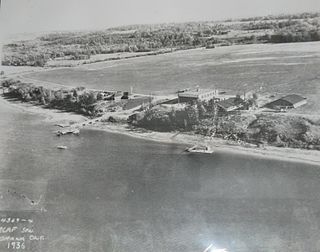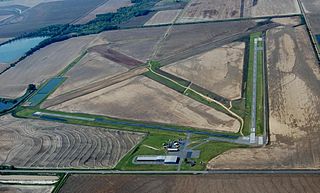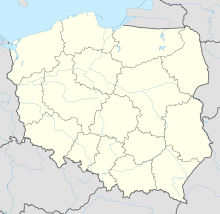
The London International Airport is an international airport located in London, Ontario, Canada. It is located 5 nautical miles northeast of the city of London, Ontario and is classified as an airport of entry by Nav Canada. In 2023, the airport was listed as the 17th busiest airport in Canada in terms of aircraft movements with 102,122 flights. The airport posted a record 683,000 travelers in 2019 and 332,447 passengers in 2023. It provides services for cargo airlines and year-round flights with Air Canada Express and WestJet.

Royal Air Force Northolt or more simply RAF Northolt is a Royal Air Force station in South Ruislip, 2 nautical miles from Uxbridge in the London Borough of Hillingdon, western Greater London, England, approximately 6 mi (10 km) north of Heathrow Airport. As London VIP Airport, the station handles many private civil flights in addition to Air Force flights.

Norwich Airport is an international airport in Hellesdon, Norfolk, England, 2.5 miles north of the city of Norwich. In 2023, Norwich Airport was the 25th busiest airport in the UK and busiest in East Anglia.

Dobbins Air Reserve Base or Dobbins ARB is a United States Air Force reserve air base located in Marietta, Georgia, a suburb about 20 miles (32 km) northwest of Atlanta. Originally known as Dobbins Air Force Base, it was named in honor of Captain Charles M. Dobbins, a World War II C-47 pilot who died near Sicily.

Downsview Airport was an airport located in Toronto, Ontario, Canada. An air field, then air force base, it has been a testing facility for Bombardier Aerospace from 1994. In 2018, Bombardier sold the facility to Northcrest Developments; in late 2023, Northcrest announced that industrial and airport operations would close by mid-2024, as redevelopment into commercial and residential properties moves forward. The airport was listed as closed March 7, 2024. On August 17, 2024, Northcrest Developments unveiled a new identity for the 370 acres of the former Downsview Airport lands drawing on the site’s history: YZD, as the transformation kicks off. The site has also been used for filming for different shows like MrBeast's Beast Games and Twisted Metal.

Lincoln Airport is a joint public/military airport five miles (8.0 km) northwest of downtown Lincoln, the state capital, in Lancaster County, Nebraska, United States. It is owned by the Lincoln Airport Authority and is the second-largest airport in Nebraska. It is included in the Federal Aviation Administration (FAA) National Plan of Integrated Airport Systems for 2023–2027 in which it is categorized as a non-hub primary commercial service facility. It has four gates with jetways, to be, as of February 2022, expanded to six.

Winter Haven's Gilbert Airport is a city-owned, public-use airport located three nautical miles (6 km) northwest of the central business district of Winter Haven, a city in Polk County, Florida, United States. It is owned by the City of Winter Haven. It is also known as Winter Haven Regional Airport or Gilbert Field. Jack Browns Seaplane Base is located adjacent to the airport, connected by a taxiway.

Novi Sad Airfield, also known as Čenej Airfield, is located near the village of Čenej in Vojvodina, Serbia. The site is mostly used for sport and agriculture, operated by Aero Club Novi Sad.

Canadian Forces Base Rockcliffe is a former Canadian Forces Base located in the eastern part of Ottawa, Ontario, now used for Ottawa/Rockcliffe Airport and the Canada Aviation and Space Museum.
Coleman Barracks/Coleman Army Airfield is a United States Army military installation located in the Sandhofen district of Mannheim, Germany. It is assigned to U.S. Army, Europe (USAREUR) and administered by the U.S. Army Installation Management Command-Europe (IMCOM-E). Coleman Barracks should not be confused with the former "Coleman Kaserne", located in Gelnhausen. The U.S. Army named the airfield after Lieutenant Colonel Wilson D. Coleman, who was killed in action in France on 30 July 1944.

Bartow Executive Airport is a public airport four miles (6 km) northeast of Bartow, in Polk County, Florida. It is owned by the Bartow Airport Authority.

Sharpe Field is a closed private use airport located six nautical miles northwest of the central business district of Tuskegee, a city in Macon County, Alabama, United States. This airport is privately owned by the Bradbury Family Partnership.

Woensdrecht Air Base is a military airport between the villages of Woensdrecht and Huijbergen, about 10 kilometres (6.2 mi) south of the city of Bergen op Zoom in the Netherlands. It is located near the A58 motorway and the border with Belgium.

Imeson Field, also known as Jacksonville Imeson Airport, was the airport serving Jacksonville, Florida, from 1927 until its closing in 1968. It was known as Jacksonville Municipal Airport prior to World War II, Jacksonville Army Airfield when the United States Army Air Forces controlled the facility during World War II, and at its closing the airport was Jacksonville – Thomas Cole Imeson Municipal Airport.

Saint-Simon – Clastres Air Base is an abandoned military airfield, which is located approximately 3 km (2 NM) northwest of Clastres and east of Saint-Simon, both communes in the Aisne department of the Picardy (Picardie) region in France. It is approximately 116 km (63 NM) north-northeast of Paris.
Haguenau Airport is an airport in France, located about 3 kilometres (1.9 mi) southeast of Haguenau ; 24 kilometres (15 mi) north of Strasburg and 400 kilometres (250 mi) east of Paris.

Bruce Field is a city-owned public-use general aviation airport located five nautical miles southwest of the central business district of Ballinger, a city in Runnels County, Texas, United States.

Almyra Municipal Airport is a city-owned, public-use airport located three nautical miles west of the central business district of Almyra, a city in Arkansas County, Arkansas, United States. This airport is included in the FAA's National Plan of Integrated Airport Systems for 2009–2013, which categorizes it as a general aviation facility.

Haren Airport or Evere Airfield is a former military airfield and civil airport in Brussels, Belgium. Located in Brussels' city section of Haren and adjacent municipality of Evere, it was established by the German Empire in 1914 and lasted until the early 1950s when it was closed. Meanwhile it had been replaced by nearby Melsbroek airfield that Nazi Germany had established in World War II, which developed into the current Brussels Airport. The former grounds of Haren-Evere airfield were redeveloped as part of the expanding Brussels urban area; some buildings remain in use as facilities of the Belgian military. Since 2017, NATO headquarters are located at Haren (Brussels) on part of the former airport grounds.

Carlisle Municipal Airport is a city-owned, public-use airport located two nautical miles (4 km) northeast of the central business district of Carlisle, a city in Lonoke County, Arkansas, United States. It is included in the National Plan of Integrated Airport Systems for 2011–2015, which categorized it as a general aviation facility.




















